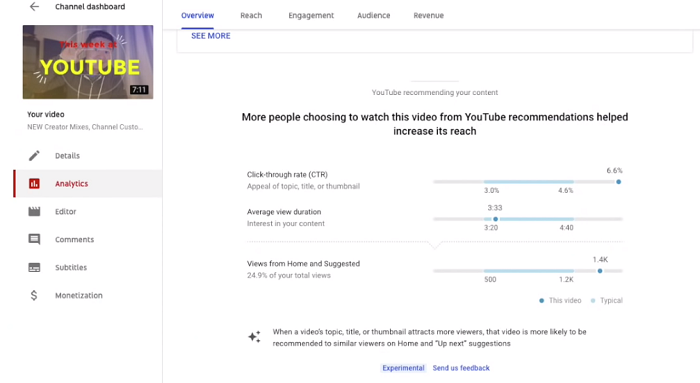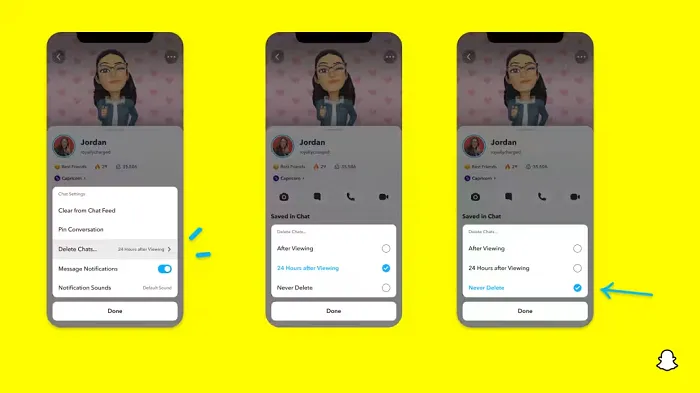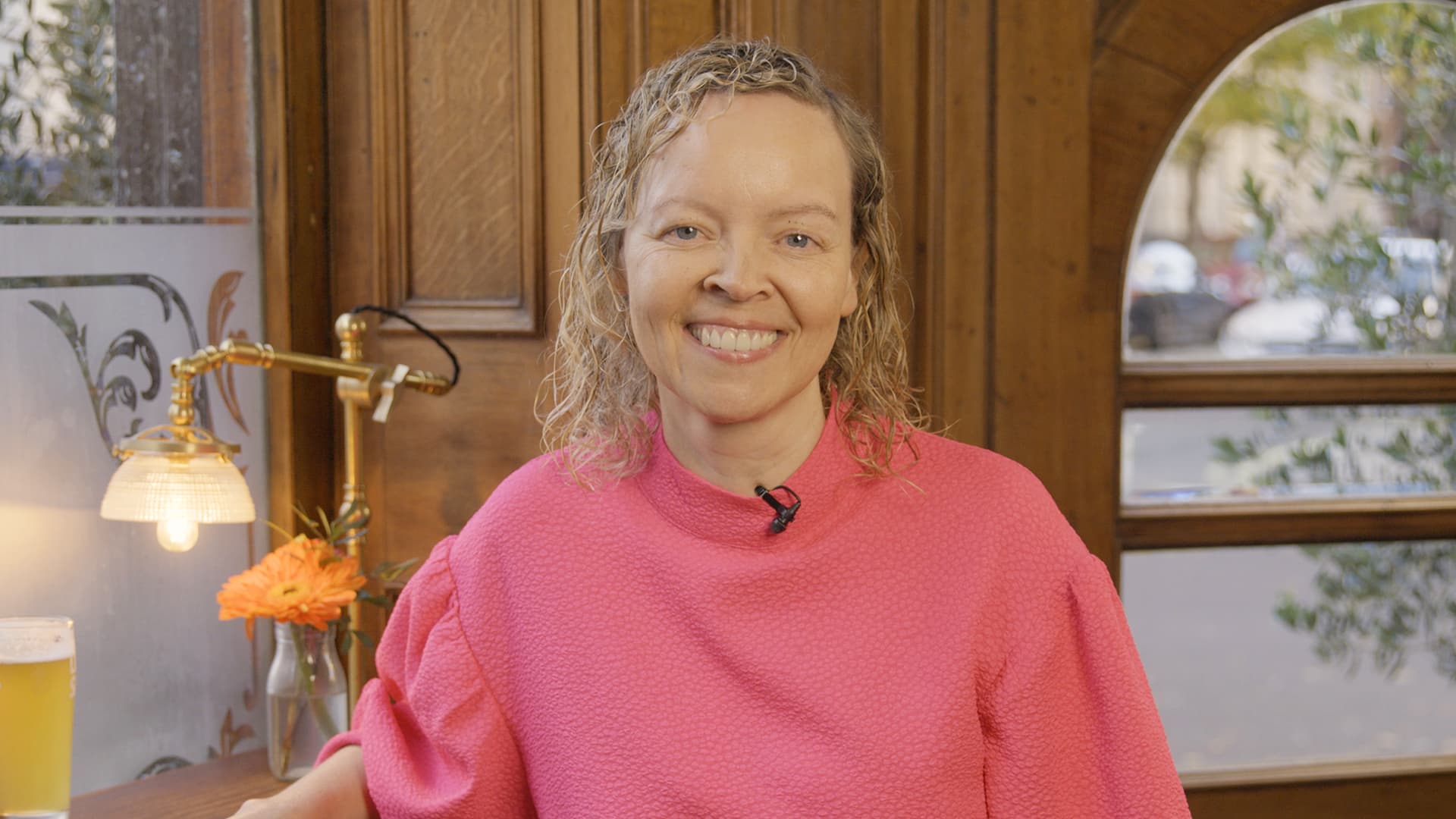SOCIAL
YouTube Explains Some Common Algorithm and Video Distribution Queries

YouTube has sought to answer some common questions about how its algorithm works when highlighting certain content to users – and why your video metrics may not always reflect performance.
In a new video on the Creator Insider channel, YouTube product managers Patricia and Rachel focus specifically on the impact of click-through rate (CTR) and average viewer duration (AVD), and how YouTube’s algorithm factors these into video distribution and performance.
Recently, YouTube outlined its coming analytics insights display, which will show creators their average CTR and AVD, helping to provide more insight into how their content is performing.

But as YouTube notes, that’s not always indicative – first off, the managers discuss the discrepancy that can occur when videos which have a low CTR still have high views.
As per YouTube:
“Click-through rate is a really tricky metric to understand. So, for a lot of creators, if you go in you look at your most successful videos the videos with the most views those are actually the most likely to have the lowest click-through rate.”
YouTube explains that this is because high distribution videos end up being shown to a much broader audience, which means that your content will be shown to a lot more people who are less familiar with you and your work. That, inevitably, means your CTR will be lower. So in some ways, it’s a consequence of success – the broader your distribution, based on how your video is performing, the lower your CTR will be.
“On the other hand, some of your smaller videos that were shown to a really relevant small targeted audience are the most likely to click, so those might have a really high click-through rate.”
So it makes sense that there will be a discrepancy between performance when your CTR is low on high performing clips, even if these data points seem like they should, generally, correlate.
But that can make it hard to measure your overall performance, or even track relevant trends. On this, YouTube recommends that creators take into account all of the available metrics, including these new insights, in order to get a better comparative view – i.e. if one metric seems out of whack, the other may better qualify it.
In isolation, any single metric could, theoretically, be confusing.
“In the long term, we hope to have A/B thumbnail testing eventually, which will help give you even more concrete answers.”
YouTube also addresses creator concerns around the impact of lower average view time resulting from external links, which could impact reach and distribution in the algorithm.
“So, in discovery, we actually look at how a video performs in the context it’s shown. So when a video is shown on Home, how does it perform there? And Home and Watch Next each have their own ranking models.”
In other words, both these discovery surfaces have different ways of deciding which videos to show to users – which, of course, makes sense, as your Home recommendations will be based on your overall viewing history, and your ‘Watch Next’ listing will be influence by what you just viewed.
With respect to the impact of lower AVD, YouTube says that this is one of several factors which will influence what’s displayed in a users’ home feed.
“So overall click-through rate and average duration are pretty good indicators of how your video is doing in general, but they definitely don’t cover all cases. […] Having more traffic from external is not going to hurt your discovery, or how your video is being recommended in Home or Watch Next. Sometimes you have to do deep-dives into individual traffic sources.”
YouTube also notes here that the new analytics display actually filters out CTR and AVD for both ‘Home‘ and ‘Watch Next’, making it easier to understand the impacts of external sources on those two metrics.
YouTube also addresses the concern that its algorithm unfairly compares average view duration for videos of different lengths.
“So, in discovery, we actually look at both relative and absolute watch time, those are both meaningful signals and how your videos are going to be recommended. You would still need to do some cross-referencing, even if we swapped out ‘average view duration’ for ‘average percentage viewed’, because it’s easier for short videos to hit a really high amount of average percentage watched. We can only focus creators on so many metrics, and we chose average view duration because how much time somebody spends with you in your content is a really strong indicator of interest. That being said, we want videos of all lengths to succeed on YouTube, and get discovered.”
YouTube also seeks to explain another common issue, where a video’s CTR will be good, and the AVD will also be good, yet the video will still underperform, making it difficult to understand what went wrong.
“CTR and AVD are among dozens of signals that we use for search and discovery – but there are also a lot of other factors that are going to influence how many impressions your videos will get, and how many people watch them.”
YouTube specifically highlights three other considerations to keep in mind:
- Competition – With so much content available, there’s inevitably a level of competition for audience, and at times, even if your video ticks all the boxes, it simply won’t gain significant traction.
- Topic interest – YouTube also notes that some topics are simply more popular. “For example, soccer – there are more people in the world interested in soccer than there are in golf. Sometimes soccer videos will get more views than golf, and that’s not because our algorithm has a preference for soccer videos, it just has a larger potential audience size for that kind of topic.”
- Seasonality – YouTube also notes that different topics will see higher levels of interest at different times of the year. That also, conversely, means that some topics will also generate less interest at the same time, which sort of points to the competition factor once again.
YouTube also notes that it’s working on new tools to provide more insight, and help creators maximize their video views. As noted, A/B thumbnail testing is one element, which will provide more specific insight into how your thumbnails are grabbing attention (or not), while YouTube’s also looking to add a new comparison tool for CTR and AVD, which would show how your channel is performing on these elements when matched against other channels similar to your own. This would be similar to the Page performance comparison tools available on Facebook or LinkedIn.
There are some interesting, valuable – though technical – insights here, which address some common YouTube algorithm pain points. If you’ve been trying to get your head around why your YouTube clips are performing, or not, these notes may help better contextualize YouTube’s internal processes.
You can watch the full Creator Insider video here.
SOCIAL
Snapchat Explores New Messaging Retention Feature: A Game-Changer or Risky Move?

In a recent announcement, Snapchat revealed a groundbreaking update that challenges its traditional design ethos. The platform is experimenting with an option that allows users to defy the 24-hour auto-delete rule, a feature synonymous with Snapchat’s ephemeral messaging model.
The proposed change aims to introduce a “Never delete” option in messaging retention settings, aligning Snapchat more closely with conventional messaging apps. While this move may blur Snapchat’s distinctive selling point, Snap appears convinced of its necessity.
According to Snap, the decision stems from user feedback and a commitment to innovation based on user needs. The company aims to provide greater flexibility and control over conversations, catering to the preferences of its community.
Currently undergoing trials in select markets, the new feature empowers users to adjust retention settings on a conversation-by-conversation basis. Flexibility remains paramount, with participants able to modify settings within chats and receive in-chat notifications to ensure transparency.
Snapchat underscores that the default auto-delete feature will persist, reinforcing its design philosophy centered on ephemerality. However, with the app gaining traction as a primary messaging platform, the option offers users a means to preserve longer chat histories.
The update marks a pivotal moment for Snapchat, renowned for its disappearing message premise, especially popular among younger demographics. Retaining this focus has been pivotal to Snapchat’s identity, but the shift suggests a broader strategy aimed at diversifying its user base.
This strategy may appeal particularly to older demographics, potentially extending Snapchat’s relevance as users age. By emulating features of conventional messaging platforms, Snapchat seeks to enhance its appeal and broaden its reach.
Yet, the introduction of message retention poses questions about Snapchat’s uniqueness. While addressing user demands, the risk of diluting Snapchat’s distinctiveness looms large.
As Snapchat ventures into uncharted territory, the outcome of this experiment remains uncertain. Will message retention propel Snapchat to new heights, or will it compromise the platform’s uniqueness?
Only time will tell.
SOCIAL
Catering to specific audience boosts your business, says accountant turned coach

While it is tempting to try to appeal to a broad audience, the founder of alcohol-free coaching service Just the Tonic, Sandra Parker, believes the best thing you can do for your business is focus on your niche. Here’s how she did just that.
When running a business, reaching out to as many clients as possible can be tempting. But it also risks making your marketing “too generic,” warns Sandra Parker, the founder of Just The Tonic Coaching.
“From the very start of my business, I knew exactly who I could help and who I couldn’t,” Parker told My Biggest Lessons.
Parker struggled with alcohol dependence as a young professional. Today, her business targets high-achieving individuals who face challenges similar to those she had early in her career.
“I understand their frustrations, I understand their fears, and I understand their coping mechanisms and the stories they’re telling themselves,” Parker said. “Because of that, I’m able to market very effectively, to speak in a language that they understand, and am able to reach them.”Â
“I believe that it’s really important that you know exactly who your customer or your client is, and you target them, and you resist the temptation to make your marketing too generic to try and reach everyone,” she explained.
“If you speak specifically to your target clients, you will reach them, and I believe that’s the way that you’re going to be more successful.
Watch the video for more of Sandra Parker’s biggest lessons.
SOCIAL
Instagram Tests Live-Stream Games to Enhance Engagement

Instagram’s testing out some new options to help spice up your live-streams in the app, with some live broadcasters now able to select a game that they can play with viewers in-stream.
As you can see in these example screens, posted by Ahmed Ghanem, some creators now have the option to play either “This or That”, a question and answer prompt that you can share with your viewers, or “Trivia”, to generate more engagement within your IG live-streams.
That could be a simple way to spark more conversation and interaction, which could then lead into further engagement opportunities from your live audience.
Meta’s been exploring more ways to make live-streaming a bigger consideration for IG creators, with a view to live-streams potentially catching on with more users.
That includes the gradual expansion of its “Stars” live-stream donation program, giving more creators in more regions a means to accept donations from live-stream viewers, while back in December, Instagram also added some new options to make it easier to go live using third-party tools via desktop PCs.
Live streaming has been a major shift in China, where shopping live-streams, in particular, have led to massive opportunities for streaming platforms. They haven’t caught on in the same way in Western regions, but as TikTok and YouTube look to push live-stream adoption, there is still a chance that they will become a much bigger element in future.
Which is why IG is also trying to stay in touch, and add more ways for its creators to engage via streams. Live-stream games is another element within this, which could make this a better community-building, and potentially sales-driving option.
We’ve asked Instagram for more information on this test, and we’ll update this post if/when we hear back.
-

 PPC7 days ago
PPC7 days agoHow 6 SEO Experts Are Navigating Google Update Chaos
-

 SEARCHENGINES7 days ago
SEARCHENGINES7 days agoBing Search Testing Removing Cache Link From Search Results
-

 MARKETING6 days ago
MARKETING6 days ago60 Remote Work Stats to Know in 2024
-

 WORDPRESS5 days ago
WORDPRESS5 days ago10 WordPress Influencers to Follow in 2024 – WordPress.com News
-

 WORDPRESS6 days ago
WORDPRESS6 days ago8 Best WordPress Migration Services (Compared)
-

 MARKETING5 days ago
MARKETING5 days agoFeeling Stuck: What to Do When You Don’t Know What to Do
-

 SEARCHENGINES4 days ago
SEARCHENGINES4 days agoMore Google March 2024 Core Update Ranking Volatility
-

 SEARCHENGINES6 days ago
SEARCHENGINES6 days agoGoogle Image Search Adds Pixel Level Object Segmentation Animation


